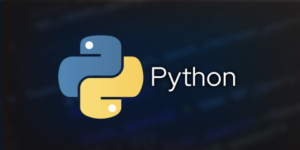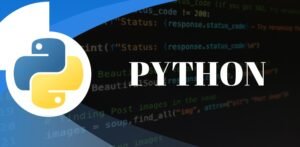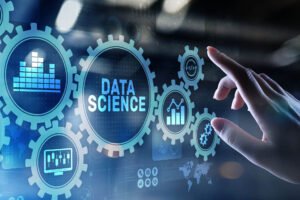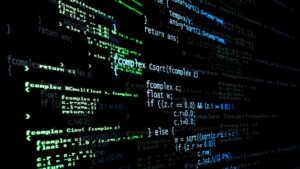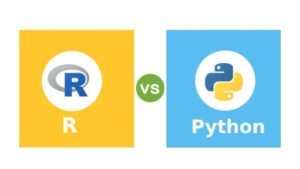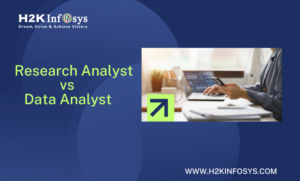Introduction
R programming Language is a powerhouse in the world of data science, offering unmatched capabilities for statistical computing, data analysis, and visualization. Whether you’re a seasoned professional or just starting out, mastering R programming is essential to crack any data science interview. This blog will explore 30 key R programming language questions that are frequently asked during interviews, providing you with a competitive edge.
If you’re looking to deepen your expertise, the Best data science course with placement at H2K Infosys can help you master not just R, but also Python and other essential tools used in data science. This comprehensive training will prepare you for real-world challenges and ensure you are interview-ready for top roles in the industry.
Top 30 r Programming Language Interview Questions and Answers
What are the key features of R programming?
R is an open-source programming language primarily used for data manipulation, statistical analysis, and graphical representation. Its key features include:
- Extensive library support for data science tasks.
- Active user community.
- Powerful data visualization tools (e.g., ggplot2).
- Compatibility with other languages like Python and C++.
How does R handle missing values?
In R, missing values are represented by NA. Functions like is.na() can be used to detect missing values, while na.omit() or na.exclude() can be used to remove them.
Example:
data <- c(1, 2, NA, 4, 5)
is.na(data) # returns TRUE for NA
na.omit(data) # removes NA and returns c(1, 2, 4, 5)
Explain the use of the apply() family of functions in R.
The apply() functions in R (apply(), lapply(), sapply(), etc.) are used to apply a function over a dataset, avoiding the need for loops. This improves code efficiency and readability.
Example:
# Apply a function to each row of a matrix
apply(matrix(1:9, nrow = 3), 1, sum)What is a data frame in R?
A data frame is a two-dimensional table where each column contains values of one variable, and each row contains values set for multiple variables. It’s the most common data structure used for storing datasets.
Example:
data_frame <- data.frame(Name = c("John", "Jane"), Age = c(25, 30))
How can you subset a data frame in R?
You can subset a data frame using the [] notation or the subset() function.
df[row, column]returns specific rows and columns.
Example:
# Extract column "Age"
data_frame$Age
Explain the difference between rbind() and cbind().
rbind()is used to combine data frames by rows.cbind()is used to combine data frames by columns.
What are factors in R?
Factors are used to represent categorical data. They can store both strings and integers and are important for statistical modeling.
Example:
factor_data <- factor(c("Low", "Medium", "High"))
How do you handle large datasets in R?
R has several packages like data.table and dplyr for handling large datasets efficiently. You can also use parallel processing to optimize performance.
What is the role of R packages like dplyr and ggplot2 in data science?
dplyris used for data manipulation with functions likefilter(),select(), andmutate().ggplot2is a powerful package for creating advanced visualizations.
What are t-tests and when would you use them in R?
A t-test is used to compare the means of two groups. R provides functions like t.test() to perform this analysis.
Example:
t.test(x = group1, y = group2)
What is linear regression in R and how is it implemented?
Linear regression is used to predict the value of a variable based on the value of another. In R, you can use the lm() function for linear regression.
Example:
model <- lm(y ~ x, data = dataset)
What are for loops in R?
for loops are control structures used to iterate over sequences, applying the same operation to each element.
How do you create plots in R?
You can create various types of plots using base R or libraries like ggplot2.
Example:
plot(x = dataset$x, y = dataset$y) What is the role of dplyr and ggplot2 in data science with R?
Discuss the significance of dplyr for data manipulation and ggplot2 for data visualization.
What are control structures in R?
Explain the role of if, else, and for loops in R programming.
How do you create and interpret boxplots in R?
Describe how to generate boxplots using boxplot() to analyze the distribution of data.
What are random forest models in R, and how do you implement them?
Explain random forest as a machine learning technique and how to implement it using the randomForest package.
How do you create histograms in R?
Explain how to create histograms using the hist() function for data distribution analysis.
What is overfitting in machine learning models, and how do you prevent it in R?
Discuss the concept of overfitting and methods such as cross-validation or regularization to avoid it in R.
How do you perform k-means clustering in R?
Describe how to perform clustering using the kmeans() function and explain the steps involved.
How do you load and read external datasets into R?
Explain how to import data from CSV, Excel, and other formats using read.csv(), read.table(), etc.
How do you handle date and time data in R?
Discuss how to work with date and time objects using as.Date(), POSIXct(), and lubridate package.
What is a time series, and how do you model it in R?
Describe time series data and how to perform analysis using functions like ts() and packages like forecast.
What is the difference between vector(), list(), and data.frame()?
Explain the differences between these data structures and when to use each.
What is the significance of the with() and by() functions in R?
Discuss how with() simplifies referencing variables and how by() applies functions to data by groups.
What are heatmaps in R, and how do you create them?
Explain how to generate heatmaps for data visualization using the heatmap() function.
How do you write custom functions in R?
Describe the process of creating custom functions using the function() keyword.
What are outliers, and how do you detect and handle them in R?
Discuss methods like boxplots, Z-scores, and handling outliers using summary() and quantile().
How do you perform Principal Component Analysis (PCA) in R?
Explain the process of reducing dimensionality using the prcomp() function.
How do you optimize code performance in R?
Discuss methods for improving performance, such as vectorization, using the data.table package, and avoiding loops where possible.
Conclusion
Preparing for data science interviews can be overwhelming, but mastering these 30 key R programming questions will give you the confidence to succeed. From handling data frames to performing statistical analyses, understanding R will make you a strong candidate.
For those looking to further enhance their data science expertise, H2K Infosys offers the best data science course with placement, designed to give you hands-on experience with Python and R. Start your journey today and crack your next data science interview with ease.
Key Takeaways
- R programming is essential for any data science role, and mastering common interview questions can give you a significant advantage.
- Understanding core concepts like data manipulation, statistical analysis, and visualization is crucial.
- Building practical knowledge through projects, real-world applications, and coding practice is key to success.
By enrolling in H2K Infosys best online course for data science with Python, you’ll receive hands-on training and industry-relevant skills that ensure job placement. With a job guarantee data science course, you can confidently enter the field and excel in your career.
Call to Action
Ready to take your data science skills to the next level? Enroll in H2K Infosys best data science course with placement and gain access to comprehensive training, real-world projects, and a job guarantee data science course. Take control of your future and become a data science expert today!









